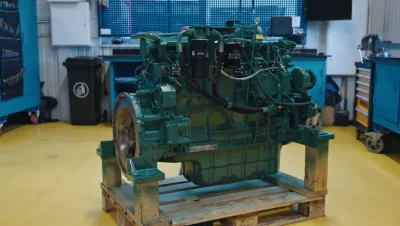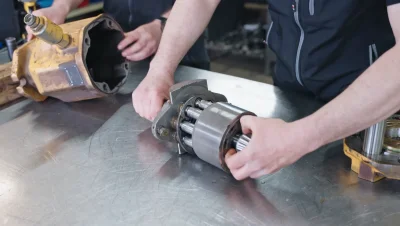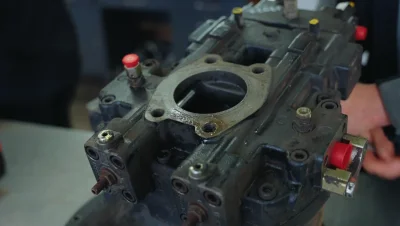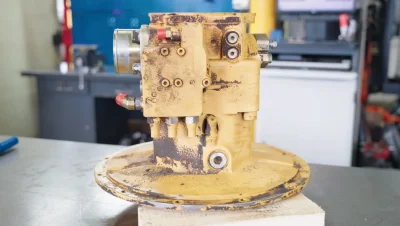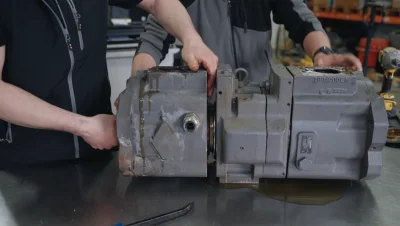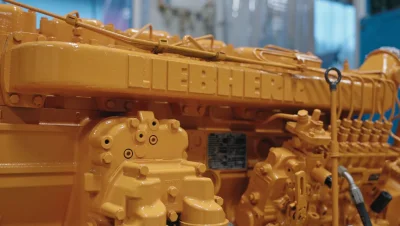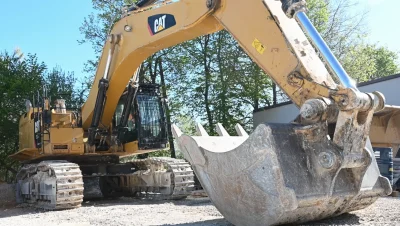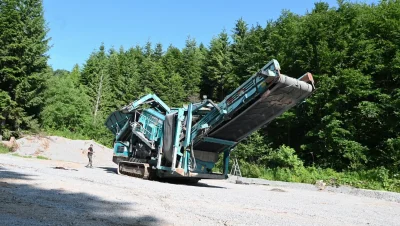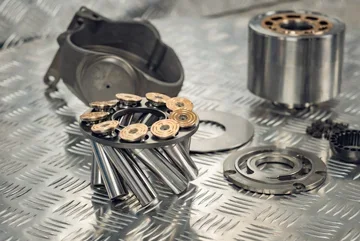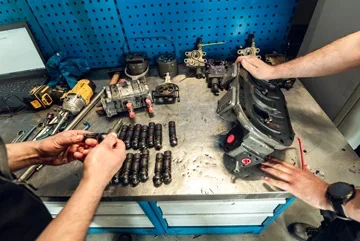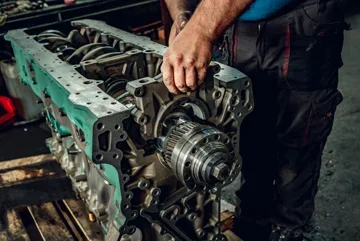What does the on-site service look like?
In this episode, we move straight to the construction site, where the installation of a hydraulic pump in a Liebherr L30 LH35 excavator is taking place. This is a perfect opportunity to show how a professional pump replacement and cleaning of the entire hydraulic system looks in practice.
When to replace the pump? Typical symptoms and operating hours
The pump was brought to the service with classic signs of wear – the tilt plate bearings were damaged. The machine had 13,000 operating hours, which, as the service team notes, is a typical moment to inspect the pump and even perform a preventive bearing replacement.
Specialists' recommendation: pump inspection every 10,000 operating hours.
Installation of the new pump – step by step
The installation begins with preparing the coupling and bolting the pump to the engine housing. Next, the rotation pump is installed. Thanks to the use of suspension, the entire process runs smoothly and safely.
Tip: even with manual installation, it is worth using simple suspension tools, which minimizes the risk of damage.
Cleaning the tank and filtration – the key to longevity
The team begins cleaning the hydraulic tank – interestingly, the tank design in this model facilitates access through two covers: one in front of the filter, the other behind the filter. This allows for thorough cleaning, although, as they say, “you need to have the will.” Then, new filters are installed, and the process of bleeding the pumps begins.
Filling and filtering oil – safety first
Even though the machine contains new oil, the technicians decide to perform additional filtration of the entire system. This allows for the removal of potential debris and protects the new pump from rapid wear.
Pressure measurements – P1 and P2
After starting the machine, working pressure measurements are taken – everything is within the standard norms. The machine passes the tests and returns to full functionality.
Summary – what is worth remembering?
- Regularly check the condition of hydraulic pumps after 10,000 operating hours.
- Replace tilt plate bearings preventively – this is a weak point in many models.
- Always clean the tank thoroughly and replace filters with every intervention in the system.
- Even new oil is worth filtering – safety costs less than a breakdown.
The entire film can be seen here.



